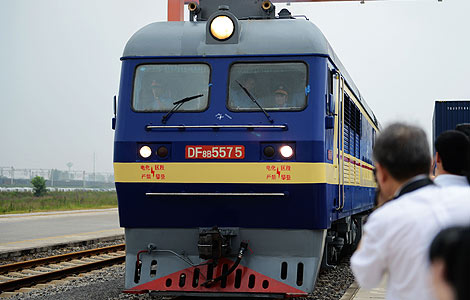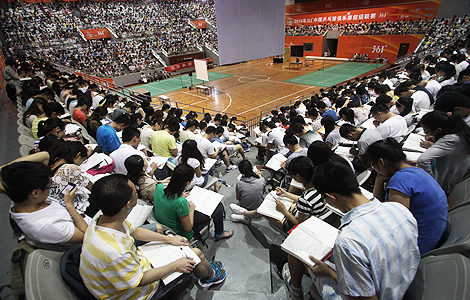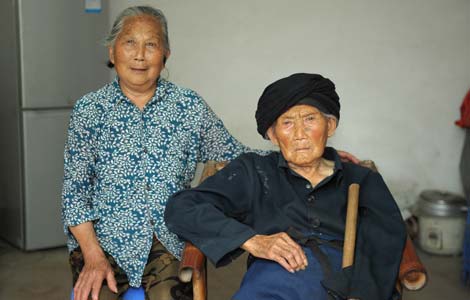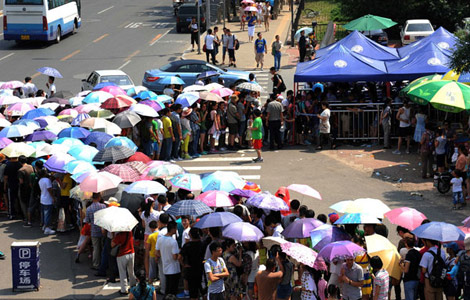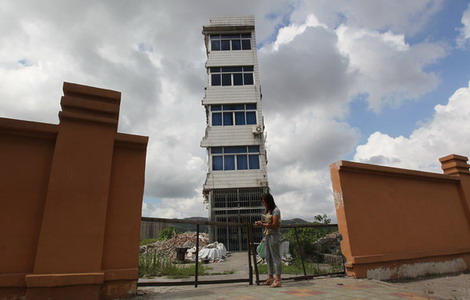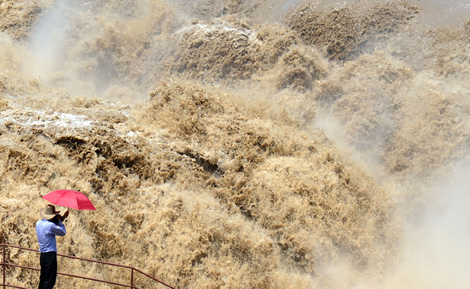

Experience and encouragement pay off
Jeyathesan Kulasingam, a Malaysian staff member of International Federation of Red Cross and Red Crescent Society (IFRC), was preparing to rotate out of Indonesia after finishing his mission there. He had worked in reconstruction after the 2004 tsunami and, given several options, chose China as his next post.
He arrived on July 20, 2008, and was surprised. Survivors he talked to in hospitals were already thinking of rebuilding and planning their next steps. Grassroots and international non-governmental organizations were already working to help people recover mentally.
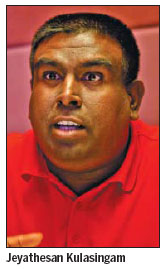
Kulasingam, 43, believes that kind of recovery is a long-term process, and he started working with Red Cross Society of China (RCSC) to help people in Sichuan's disaster areas return to normal life in terms of their mental health.
He helped design psychosocial programs and implement activities to speed the rebuilding of networks among groups, such as children, women and the elderly. Other activities were developed to identify people who needed psychological treatment to deal with depression.
"But it is not a one-off thing and we do it every day," Kulasingam said.
It is not just about having fun and playing games, he said, but a program that systematically brings people to see the process of healing and readjustment. "We have dealt with people who lost their legs and hands and helped them accept the fact and regain their normality."
One is a woman from a village in Mianzhu city who had suffered multiple leg fractures. When Kulasingam met her in October 2008, she was afraid to be treated because she didn't think she could recover. She dismissed the idea of surgery.
Kulasingam and his team visited her and her family frequently and explained to her how, if she recovered, she could again participate in work and family life. They went with her to physiotherapy sessions to provide encouragement. Finally, the woman agreed to have surgery during Spring Festival in 2009.

Two weeks after the festival, she opened a small store in front of her house. When Kulasingam met her then, he saw a confident and smiling person. Now she walks without a cane and her injured legs are strong.
"We are touched and encouraged by the progress of people," Kulasingam said.
Those who provide help also progress, he said. As an experienced delegate of IFRC - he started with Red Cross 30 years ago, in primary school, as a volunteer - Kulasingam has worked to develop local Red Cross branches by training staff members.
At the beginning, he said, the programs were strange and the staff members reluctant. "They have to depend on technical support from people like me," he said, and now they have taken leadership of the programs.
That makes Kulasingam believe his program is sustainable and institutionalized. "Nobody is waiting for something, but moving on. They keep progressing."
In time, local Red Cross branches will feel ready to run their programs and won't need his technical assistance. Then Kulasingam can move on to his next post.
Lesson begins on resiliency and culture
Timothy Sim's father died that day, so he had other things on his mind. It was two weeks before Sim, a psychotherapist in Singapore, would learn about the devastating earthquake.
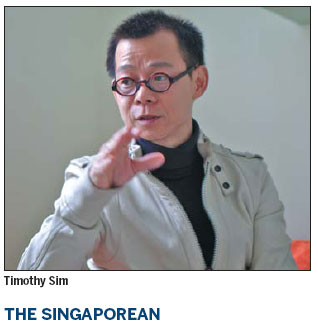
Over the next two-plus years, he would learn the importance of familiar cultural elements and that "people themselves have the resilience to recover from misfortune".
As a PhD social worker, he knew about devastation from his work with adolescent drug abusers and ex-offenders and their families in Singapore and Hong Kong, but nothing about relief work or disaster management. Nevertheless, he accepted immediately when a friend who worked for an international charity invited Sim to join its relief work in Sichuan.
Sim, now 45, already had been scheduled to leave the National University of Singapore to join The Hong Kong Polytechnic University (PolyU) on July 2. He took personal leave to visit Chengdu, the capital of Sichuan, on June 4 and then go on to the quake-hit areas. It was the first of many trips to Sichuan; he spent 103 days there in 2009, his peak year.
In the first 12 months, Sim trained medical professionals, psychologists, teachers and social workers to deal with mental health issues in a traumatic situation. He organized summer children's projects that developed into the Sichuan Expanded School Mental Health Network, which PolyU established in February 2009. Sim then focused on that project, which covers five schools in disaster areas.
But he felt some resistance, and learned about a local saying: "Be mindful of fire, theft and psychotherapy." So how could mental health professionals provide appropriate services in a disaster? By teaching less and serving more as a catalyst so people could find their own way back.
In September 2008, Sim met four teachers from Yingxiu Primary School, which lost about 400 students in the earthquake. Three of these teachers had lost a wife or child. Their psychological trauma was deep, but they weren't open to psychological therapy.
During Spring Festival in 2009, in response to their wish for a short break, Sim arranged for them to take a trip to Yunnan province. He thought it was a good opportunity for these teachers to air their accumulated sorrows.
It worked. After they returned, Sim could see they had begun to relax, compose their emotions and plan for the future. Those who had been widowed even started new relationships and eventually married again.
Several months after the trip, the four voluntarily began to tell Sim about their experiences and feelings, and that they worried some of their cherished memories would be forgotten. He interviewed them individually and recorded what they said. When he gave transcripts to the teachers, one of them told Sim, "You have helped me to organize my past experiences and I can close the page now."
One recovery technique came to Sim by happenstance in Yingxiu, the earthquake's epicenter, in February 2009. The town had lost about 80 percent of its population.
He was walking down a street when he saw people dancing - dynamically and spontaneously. He learned that it was an after-dinner practice of the local people called guozhuang dance, a Tibetan and Qiang ethnic folk dance.
The idea of holding a show of guozhuang dance came to Sim's mind, and on May 1, he and the local government sponsored the show. It attracted more than 2,000 townspeople.
"Their mental outlook appeared really good, and they were dancing joyfully," Sim said. "They have their own power to recover."
Sim and his social worker team in schools started to utilize indigenous elements to help children. They used traditional Chinese New Year painting activities to attract students. They invited a dance teacher, Liao Zhi, to work with handicapped students in Hanwang Primary School.
Liao had lost her legs in the quake but persisted in dancing. She uses prosthetic legs and performs on a big drum. The children watched, and learned.
A dozen of them danced as a group at their school, and the audience was shocked into silence. In May 2010, Sim arranged for these students, half of whom had lost legs or hands, to perform their dance in Hong Kong to demonstrate resilience from disaster.
Changes came to the local people, but it was not all one-way. Sim said his attitude to his work of psychological therapy has changed as well.
"I need to respect the people I serve, listen to them and know the resources they have that can be used to help them," he said. "What I teach my students right now is totally different from two years ago."

